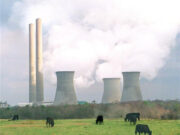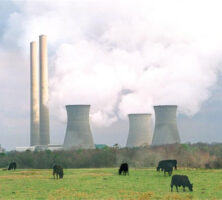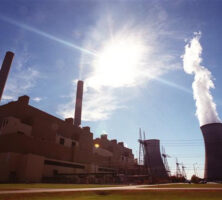Industries in Georgia, including paper manufacturing, agriculture, and electrical power generation, produce and manage thousands of tons of industrial toxins each year. A toxin, by definition, is a substance that is highly poisonous to living creatures. Toxins generally originate from such living sources as plants, animals, and bacteria. In today’s highly industrialized world, however, humans create toxins as by-products of the processes used to produce goods, food, and energy. Some of these toxins have direct and negative impacts on human health, while others affect the environments in which people live, thereby creating an indirect impact on human health.
The U.S. Environmental Protection Agency (EPA) imposes pollution standards for all industrial practices, and companies are offered economic and regulatory incentives to comply with these standards. Companies are expected to manage toxic by-products responsibly by educating their staffs, maintaining internal communication, rewarding compliant employees, and emphasizing public outreach and education in order to prevent pollution.
Paper Mills
With twenty-six paper mills operating statewide in 2009, the paper production industry generates roughly $20 billion in annual revenue for Georgia. Paper mills are found across the state, with most of the larger ones located near the coast, in Augusta, Brunswick, and Savannah. The by-products of the papermaking process, including dioxin, have contaminated these industrial centers. A deadly toxin, dioxin is a by-product of the molecular bleaching process of paper. In recent decades new methods have implemented the use of alternative bleaches and chlorine dioxide in order to reduce the production of dioxin.
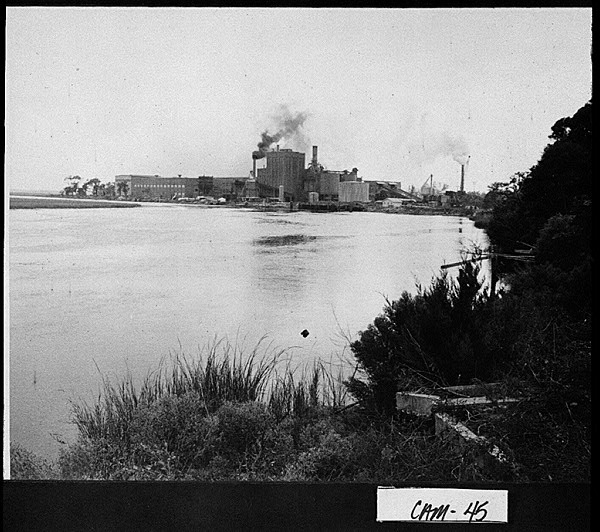
Courtesy of Georgia Archives.
Other forms of industrial toxins produced by paper mills include nitrous oxide, carbon monoxide, sulfur dioxide, and volatile organic chemicals, which are released into the air through leaky valves and open-ended lines. These air emissions often produce the unpleasant odor found in the vicinity of many mills. Additional industrial toxins generated by the papermaking process include mercury, which is used in fungicidal processes; cellulosic fibers, which congeal into toxic sludge; and chlorophenolic wood preservatives and anti-sap stains. Legislation passed under the federal Comprehensive Environmental Response, Compensation and Liability Act (CERCLA, or Superfund) attempts to remediate the damage caused by the mismanagement of these by-products. The Durango-Georgia Company paper mill in St. Marys and the Gilman Paper Company mill in the Kings Bay area are among former paper mill sites in Georgia that have been addressed by Superfund.
By-products are an inevitable result of mass production in many major industrial processes, but toxins can be reduced with protective actions. Within the papermaking industry, new chemical and mechanical processes can make pulping a more efficient process, and certain enzyme treatments have been found to reduce energy costs and corrosion. These treatments increase the efficiency and durability of the mill’s equipment and, in turn, reduce environmental hazards associated with bleach paper mill effluents. Another way to reduce the amount of toxins released is through the paper recycling process. Recycling paper causes far less air and water pollution than does the manufacture of new paper and thus can help reduce the negative health impacts of the paper industry.
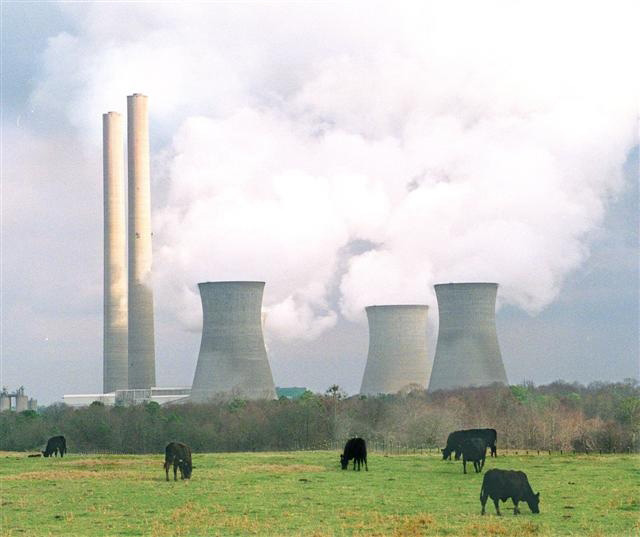
Courtesy of Atlanta Journal-Constitution.
Agricultural Wastes
Agricultural production generated nearly $7.1 billion in revenue for the state of Georgia in 2007, according to the U.S. Department of Agriculture. Georgia is the nation’s leading producer of broiler chickens, peanuts, pecans, and watermelons. Producing these commodities on a large scale requires the state’s farmers to employ highly industrialized processes.
The poultry industry in Georgia produces massive amounts of chicken litter, or waste, as a by-product. Chicken litter contains large amounts of the elements nitrogen, phosphorus, and potassium, which can be carried to surface waters in runoff pollution. An influx of these nutrients into surface waters can cause accelerated and excessive plant growth, such as an algal bloom, which in turn takes over the space and resources required by fish and other aquatic life. Because it cannot be traced back to a specific source, runoff pollution, also known as nonpoint pollution, is difficult to regulate.
The extensive use of fertilizers and pesticides, which are washed by precipitation into the water supply, to cultivate crops is another source of agricultural toxins. Such chemicals are regulated and tracked by the Federal Insecticide, Fungicide, and Rodenticide Act (FIFRA), which requires that chemicals be carefully monitored from production to application as a safeguard against misuse and neglect. Another toxin, methyl bromide, is used to control pests. A vapor of methyl bromide, a colorless and odorless gas, is applied to the soil. However, because methyl bromide depletes ozone from the stratosphere, it is now highly regulated by both state and federal governments.
Ways to decrease the amount of agricultural toxins that are released into the environment include reducing the amount of chemical fertilizers and manure applied to crops, carefully managing the disposal of farm wastes, and planting crops in winter to reduce runoff over bare ground.
Coal
Mined primarily for the generation of energy and electricity, coal has a variety of uses. Coal is not mined in Georgia, but in 2009 twelve coal-fired power plants in the state produced approximately 64 percent of Georgia’s electricity and contributed more than $2 billion to the state’s economy, according to the American Coal Foundation. Much of the coal burned in Georgia is mined in the Appalachian Mountains of such other states as Kentucky, West Virginia, and Pennsylvania, although some coal is also imported from western states, including Montana and Wyoming. A number of environmental repercussions are associated with coal mining, and particularly with the practice of mountaintop removal, which has caused environmental degradation in the Appalachians. Today, coal mining is highly regulated, and such organizations as the World Coal Institute are making efforts to reduce the effects that coal mining and the toxins associated with it have on the environment and local communities.

Courtesy of Atlanta History Center.
The burning of coal releases toxic substances, including carbon dioxide, sulfur dioxide, nitrogen oxides, and mercury compounds. Coal-fired power plants generate the most sulfur dioxide pollution, as compared to other methods of power production. Georgia Power’s Bowen plant, located in Cartersville, produces the most tons of sulfur dioxide in the nation, and Georgia Power’s Scherer plant, located in Monroe County, emits the most carbon dioxide in the United States. These industrial toxins, specifically carbon dioxide, can contribute to climate change.
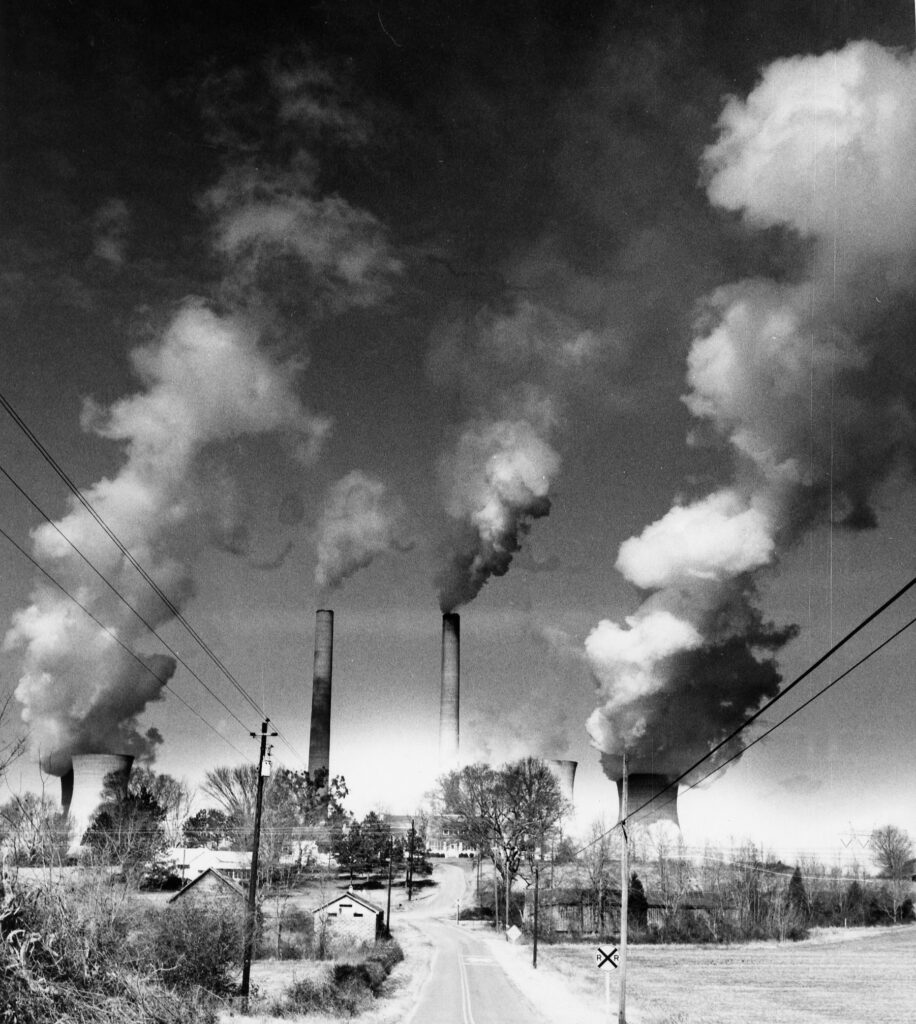
Courtesy of Atlanta Journal-Constitution.
The release of sulfur dioxides and nitrogen oxides into the atmosphere can irritate human respiratory systems. Nitrogen oxides also contribute to the formation in the lower atmosphere of ozone, the primary component of smog. (Ozone in the upper atmosphere absorbs harmful ultraviolet light and is beneficial to the planet.) The most economically significant consequence of sulfur dioxide and nitrogen oxide emissions is acid rain, which occurs when these gases react with water and oxygen in the atmosphere to form acidic compounds. When the compounds return to the earth in the form of rain, they can cause extensive damage to property and soil.
Mercury compounds released from coal plants are extremely toxic to humans. These compounds can cause permanent damage to the brain and kidneys, as well as to fetuses. Three reduction methods being implemented in the coal industry are the use of scrubbers and mercury controls, as well as the closure of old plants. Various types of technological equipment systems, including scrubbers, baghouses, and activated carbon injections, are used to capture pollutants before they are released into the air. Although Georgia has not done so, several states have also adopted strict mercury pollution reduction standards. These increases in standards typically lead the way to newer, cleaner plants that, in turn, lead to a decrease in carbon dioxide pollution.


